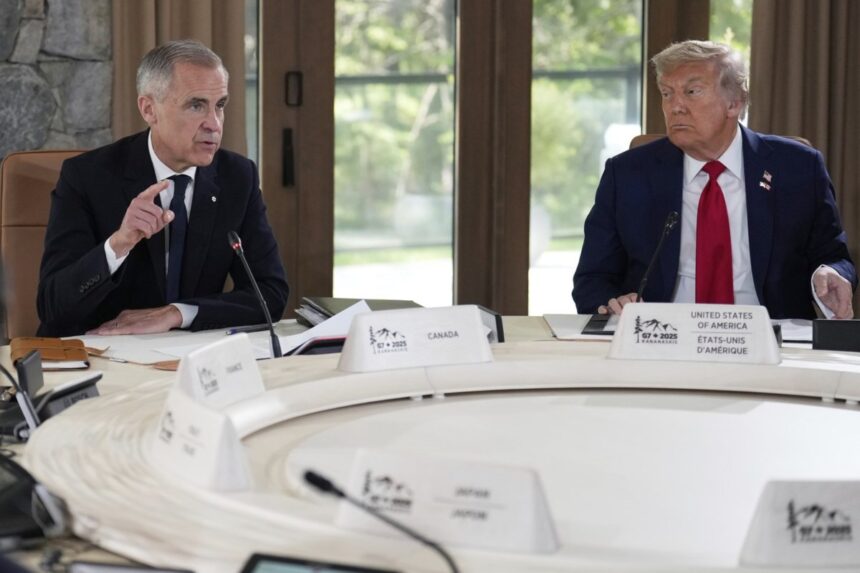In a rapid response to mounting economic pressure from south of the border, former Bank of Canada governor Mark Carney is meeting with federal cabinet ministers and provincial premiers to strategize against Donald Trump’s latest tariff threats. The high-stakes discussions, occurring just weeks after Trump’s electoral victory, underscore Canada’s growing anxiety about potential economic disruption as the president-elect doubles down on his protectionist agenda.
Trump’s recent declaration promising a sweeping 25% tariff on all Canadian and Mexican imports—alongside an eye-watering 10% global tariff—has sent shockwaves through Canadian economic and political circles. These measures, if implemented, would represent one of the most aggressive trade actions against Canada in modern history, dwarfing previous sector-specific disputes over softwood lumber, steel, and aluminum.
“This isn’t just another trade skirmish—it’s an existential threat to Canada’s export-driven economy,” said Dr. Elena Ramirez, international trade economist at the University of Toronto. “With approximately 75% of our exports destined for the American market, these proposed tariffs could devastate entire industries and communities across the country.”
Carney, who now serves as the government’s special advisor on the economy, brings considerable international financial expertise to these urgent discussions. His background leading both the Bank of Canada and the Bank of England positions him as a uniquely qualified voice in navigating what could become Canada’s most significant economic challenge in decades.
Prime Minister Justin Trudeau’s office confirmed that provincial leaders have been invited to participate in virtual meetings, emphasizing the need for a unified national approach. “This isn’t a partisan issue—it’s a Canadian issue,” said Ontario Premier Doug Ford in a statement to the press. “We need to stand together and make it clear to our American friends that these tariffs would hurt both economies.”
Economic analysts at the Royal Bank of Canada estimate that Trump’s proposed tariffs could reduce Canadian GDP by as much as 1.8% within the first year of implementation, potentially triggering significant job losses in manufacturing, agriculture, and natural resources sectors. These projections have heightened concerns in provinces with significant export exposure, particularly Ontario, Quebec, and Alberta.
The Trudeau government appears to be pursuing a multi-pronged strategy, exploring legal challenges through NAFTA’s successor agreement (USMCA), building coalitions with American business interests that would be harmed by tariffs, and preparing potential retaliatory measures if diplomatic efforts fail.
“Canada needs to demonstrate that it has both the capability and resolve to respond proportionally,” said former Canadian ambassador to the United States David MacNaughton. “That means identifying American vulnerabilities—from energy imports to supply chain dependencies—while simultaneously looking for diplomatic off-ramps.”
Trump’s tariff threats have also reignited debates about Canada’s economic sovereignty and over-reliance on the American market. Some policy experts are calling for accelerated trade diversification efforts, particularly toward growing Asian and European markets that might offer more stable trading relationships.
As these high-level discussions continue behind closed doors, ordinary Canadians are left wondering how their livelihoods might be affected by decisions made in Washington. With supply chains deeply integrated across the world’s longest undefended border, the potential for economic disruption extends far beyond corporate balance sheets to kitchen tables across the country.
The question now facing Canadian leadership is not just how to respond to these immediate threats, but how to position the country for long-term economic resilience in an increasingly unpredictable global trade environment. Can Canada maintain its prosperity while reducing its vulnerability to the political winds that blow from its powerful southern neighbor?










